Portland Bound: a Photographic Journey from Texas to Oregon in a BMW E46 M3
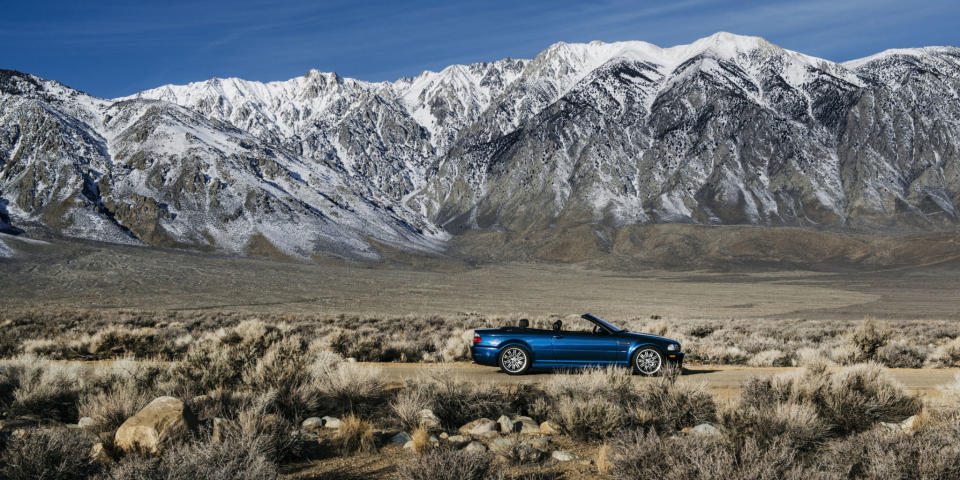
Day 1: A Brutal Slog
"Nice car you got."
"Thanks."
I was visibly uncomfortable, both with accepting praise on behalf of my friend's M3 and also fielding questions while standing at a urinal in a gas station outside of San Antonio.
"What year is it?" the man asked, standing in the bathroom doorway.
"What's the displacement?"
"How much power does it have?"
I answered each question while staring straight ahead.
As soon as I exited the restroom, the same stranger-let's call him "David," since he immediately told me that was his name-greeted me outside. He spoke softly, leaned in close, and informed me that Adam (yes, that Adam) had lived for 930 years. It was important that I lived a virtuous life. He bestowed other bits of wisdom and life advice. David was genuine but extremely intense. I looked for a way to get out of this without disappointing him. After a couple minutes, my politeness ran out. "I have to go . . . we have . . . a thousand more miles left to drive today."
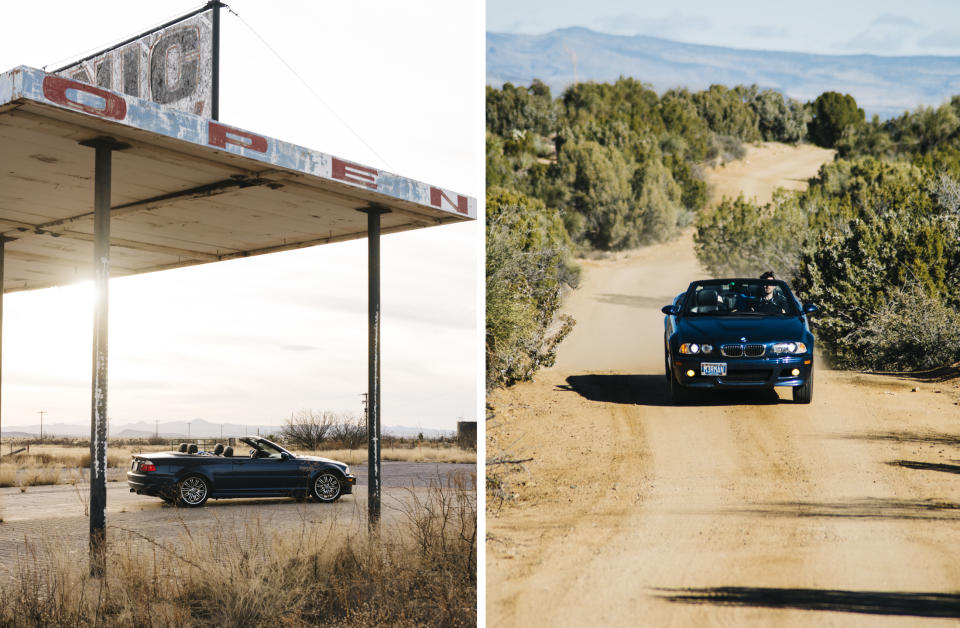
A couple of weeks earlier, my friend Daniel Sloan had asked if I wanted to join him on a drive from Houston, Texas, to his home in Portland, Oregon in his 2004 M3 convertible. He had been visiting family over the holidays, but it was time for him to return home. Daniel takes his M3 everywhere, and, in a good year, accrues around 20,000 miles in it, mostly on windy backroads and long-distance adventures. I knew he'd be doing this journey properly, so I said yes without hesitation.
Daniel and I are both photographers, and we both love a good road trip. Add a camera and a willingness to stop at every overlook, abandoned mill, or rusting classic car, and there's nothing better. Sometimes, it seems as though 75 percent of photography is simply having a good background, and that's exactly what we'd be surrounded by for the next week.
But before we could go anywhere, we had some preparation to do. Our trip was slated for the end of January, so Daniel had his snow tires re-fitted to the M3 along with getting a fresh alignment and a once-over by a professional mechanic. We changed the engine oil in my garage.
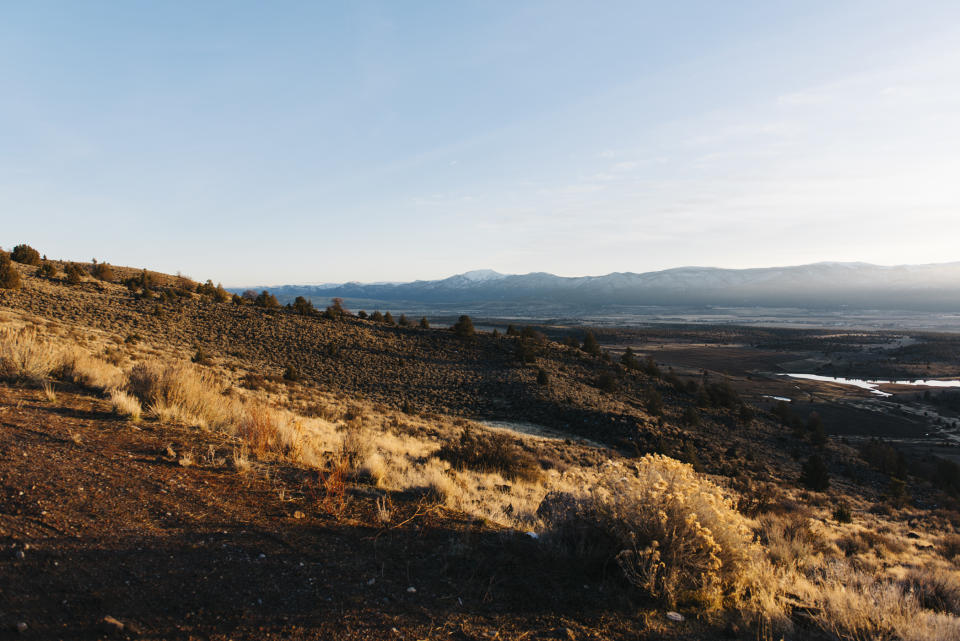
Next up: planning. My road trips are usually a seat-of-the-pants affair, where "we get there when we get there" and finding a hotel is always a frantic, last-minute challenge. Daniel, on the other hand, has his down to a science. As he does with every long drive, he planned our route on the Roadtrippers web-based map, and together we chose a five-day path through Death Valley, Sierra Nevada, the Cascades, and parts of central Oregon. We plotted out how far we would go each day, where we'd stay, and how much time we could spend eating and straying from the route.
The plan was smart but regimented. Privately, I wondered if we'd even have time to stop and enjoy any of the trip, but I quickly dismissed my concerns. Daniel had just driven from Oregon to Texas a month earlier with stopovers in all five of Utah's National Parks; he knew what he was doing.
The plan was smart but regimented. Privately, I wondered if we'd even have time to stop and enjoy any of the trip.
We left the Houston at 5 a.m., made it to San Antonio just after the 7:30 sunrise, and discovered we had a mutual love of late-90s Need For Speed menu music by around 8:00. Thankfully, everything is on YouTube, and soon we were cruising down the road to the electronic soundtrack of our youth.
We'd resigned ourselves to the fact that the first day was inevitably going to be a slog. We had eight hours of crushing Interstate 10 monotony in front of us-just to get out of Texas. With so much time, I thought about the photos I was hoping to take. My approach on a trip like this is casual but thorough: I want to capture a sense of all the different locations and settings, but without getting bogged down with perfecting long setups that would slow us down.
Above all, I think the car is just an accessory to the event of going somewhere. It's a part of the scene, but not always the focus. The juxtaposition of car and place interests me, as the car can help to show scale and can serve as a constant element throughout all of these disparate locations. In the end, it's about the journey, and the vehicle is the way in which you get there.
By the time the day was done, we had traveled 1200 miles.
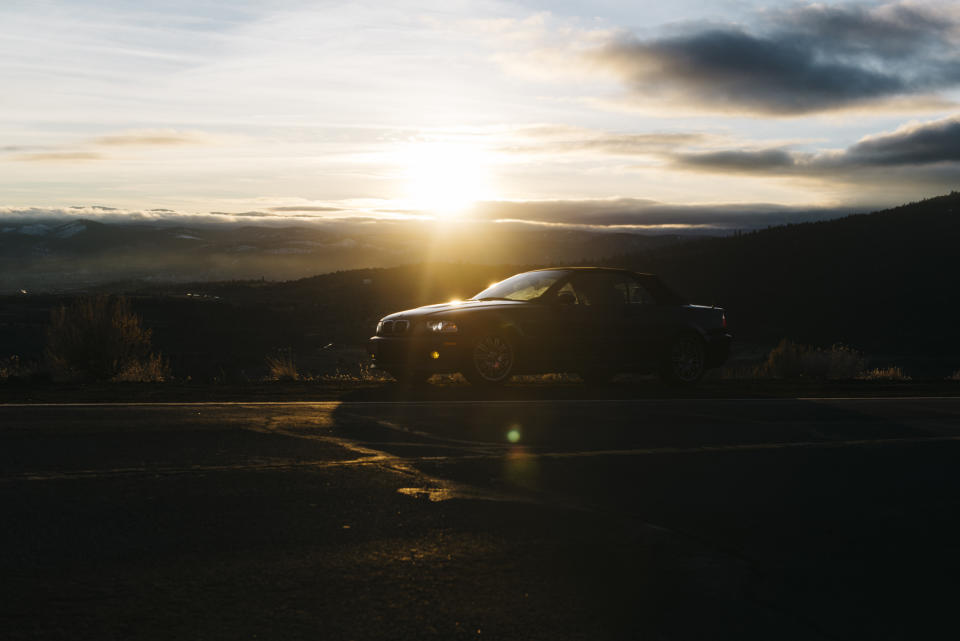
DAY 2: Death Valley
The blaring of my 6 a.m. iPhone alarm woke my from my dreams of interstate driving. Despite the fatigue, it doesn't require much motivation to want to leave a charmless Days Inn in Scottsdale, Arizona as quickly as possible. We had another ambitious day that had us crossing northwest through Arizona, past Las Vegas, and straight into the first of many planned stops, Death Valley. We would then exit out of the northwest side of the park in the evening, before setting down in either Bishop or Big Pine, California.
But first, coffee.
I had heard about a Porsche 356-themed coffee shop called Four Till Four that had opened just days earlier in Scottsdale, and I couldn't not check it out. As a Porsche enthusiast who also barely squeaks into the ownership ranks (my Boxster S is almost old enough to legally drive itself), I waited patiently outside the shop until the owner roared up in his patina'd 356C Coupe. We chatted with him about cars, espresso, and why this glorious marriage of the two took so long to happen.
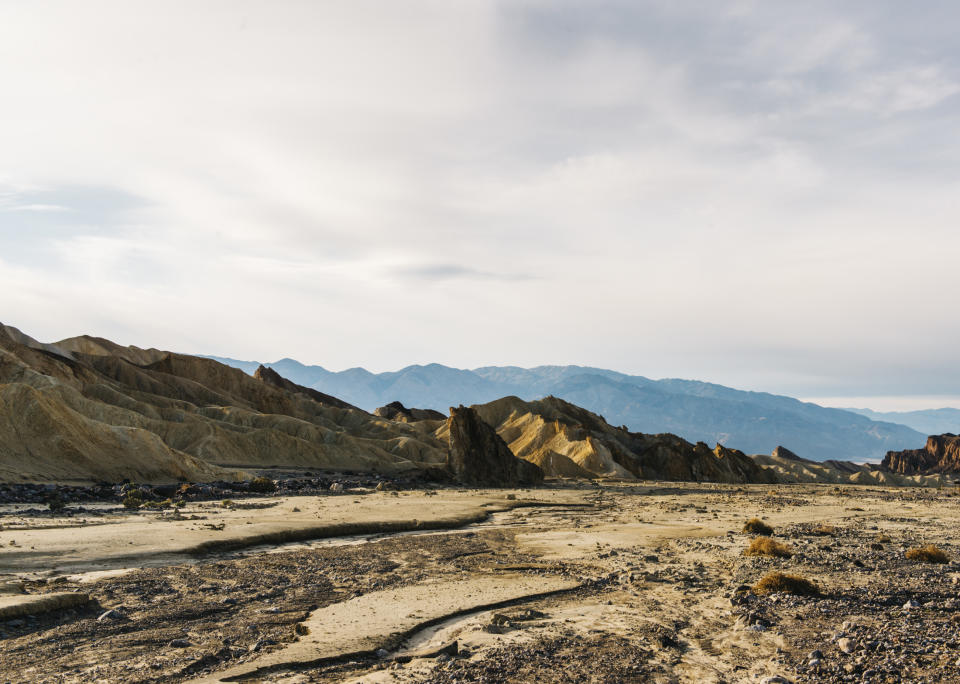
By the time we made it to Death Valley later that day, it was a dry 80 degrees, and the sun had settled behind a thick, gray haze. The basin is famously known for its absence of life, but on the day we visited, it was devoid of all color, too.
As we made our way through the park, the state-of-the-art-in-2004 BMW navigation system was quite handy, providing guidance when our phones no longer had service. It also offers a genuinely cool GPS-based elevation readout that we constantly referred to over the next four days. In Death Valley, it read as low as -240 feet.
It's really kind of absurd-hundreds of tourists here to see a barren, inhospitable desert. Including us.
I expected Death Valley to feel dangerous and risky, to be a place where if you weren't careful, you might not survive. That's how my grandparents described it 20 years ago, at least. For the most part, there were too many other sightseers and too much signage to ever feel any real sense of isolation. It's really kind of absurd-hundreds of tourists here to see a barren, inhospitable desert. Including us.
As the muted sun dipped below the mountains, the temperature plummeted. Rather than put the convertible top up, we grabbed our jackets and hats and continued on our route out of Death Valley, an unexpectedly fantastic drive-winding, full of elevation, almost completely empty. Even in near-total darkness, the rhythm of the switchbacks made each turn seem predictable, natural. The car felt in tune with each bend, and it's grip level seemed to far exceed what the winter tires should be capable of. I suspected there was something magical about the chassis to pull off such remarkable feats.
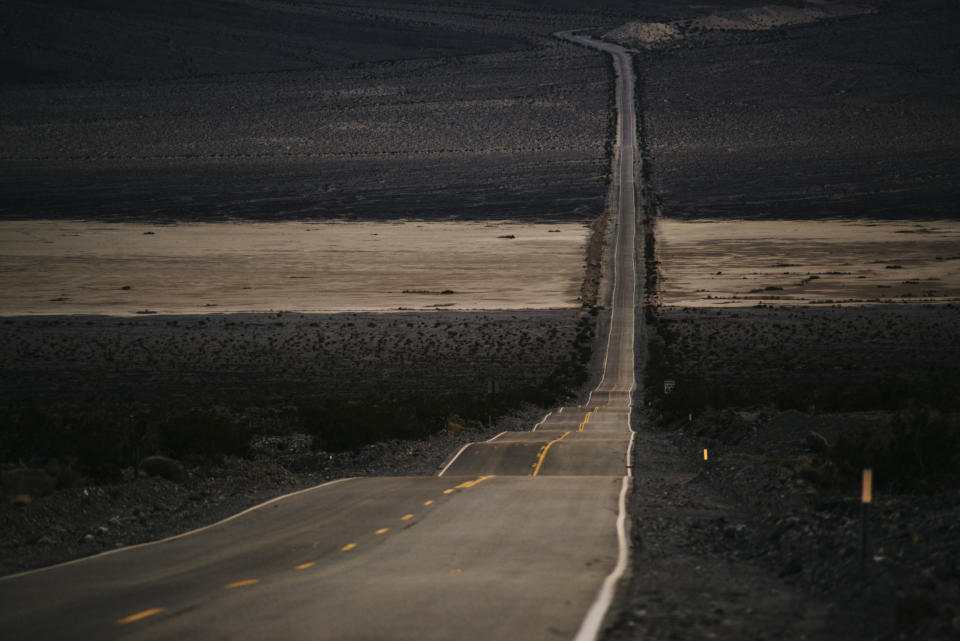
Later, outside of Independence, California, we stopped for some night photos. Under the stars and amongst the Sierra Nevada mountains, the conditions were so beautiful that we didn't mind standing around in 40-degree temperatures waiting for long exposures. We focused our cameras on the M3, which we parked in front of a staggeringly vast mountain backdrop.
Around 8 or 9 p.m.-I'd lost track of time zones at this point-something strange started happening. The mountains behind the car appeared to be getting brighter. First, just the snow-capped peaks were illuminated, but then, eventually, the whole range gleamed. We had no idea what was happening. Maybe our eyes were adjusting?
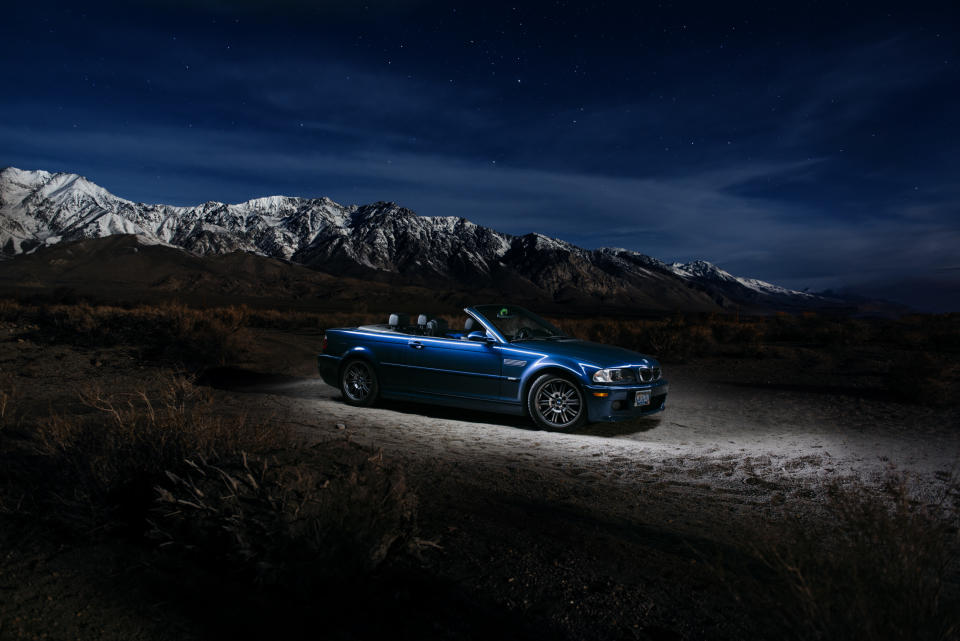
Not the case. We'd been so enamored with the mountains that we missed the slowly rising full moon at our backs. As the bright orb continued its ascent, the flood of light spread from the foothills to the ground where we stood. The scene was spectacular, with the moon providing a nice, even lighting cast for our photos, which seemed insignificant at this point. Forget the car, I thought, as I rotated the tripod head towards a view that no photo capture could ever do justice to.
When we rolled into Bishop a little further up Route 395, we were running ahead of schedule. We were also exhausted. The driving, frequent stops, and mostly terrible food were taking a toll on us. We asked the desk clerk at our hotel where the best place in town was to get a beer and late dinner. "The bowling alley," he said. It was closed, so we settled on the only place that was open: a Sushi restaurant.
We were initially skeptical of a late-night, small-town sushi, but after a couple of beers, any concerns were washed away. Funny how that works.
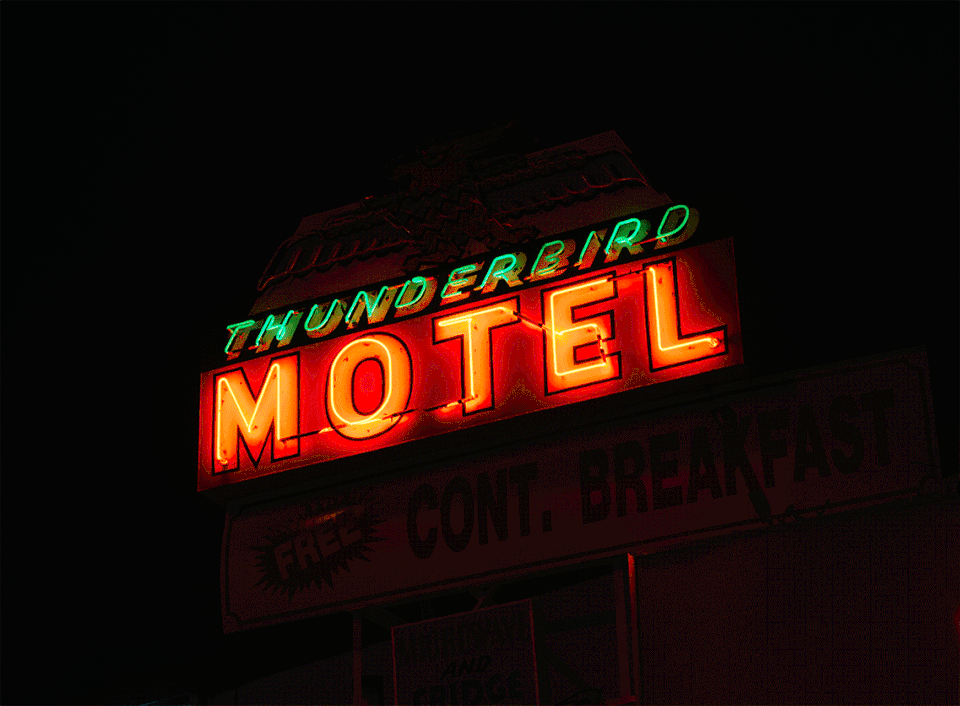
DAY 3: The Other California
From Bishop, it was only an hour's drive northwest to the first destination of the day, Mono Lake, a salty body of water 6300 feet above sea level that was formed 750,000 years ago. The T-shirt weather of the previous afternoon was long gone-it was cold, there was snow on the ground, and according to the BMW's pixelated GPS display, we were at 5000 feet of elevation and climbing. After a quick tourist stop in which we successfully avoided slipping on a million smooth, frozen rocks along the shore, we continued on.
Our main attraction for the day was Lake Tahoe, but in the dead of winter, it was a gamble whether the roads we chose would be open. We were able to check weather conditions on our phones, and some roads even have live webcams, which saved us some hassle when we discovered that the western side of Lake Tahoe was closed due to snowfall.
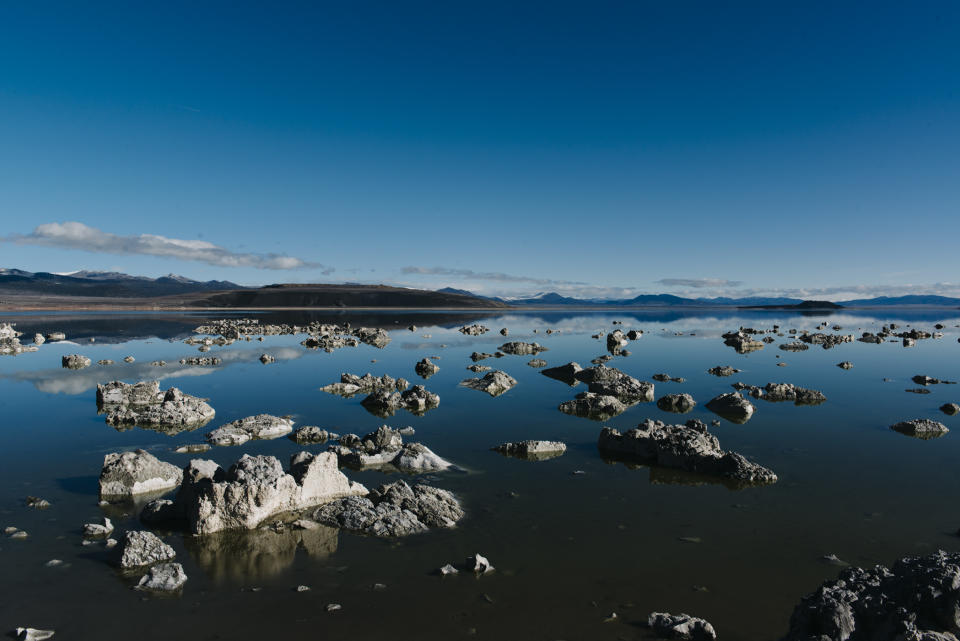
As we headed further into northeastern California, the atmosphere changed. The isolation and sense of danger that I was seeking in Death Valley really exists here: You plan ahead as if you were heading into the Australian outback.
In fact, parts are so remote, Daniel stressed that if you wait to stumble on a dinner spot and motel, it probably won't happen. With that in mind, we decided to stay in Adin, a town with a population of 272 a few hours away on State Route 139. On the phone, the desk attendant at the motel warned us to watch out for ice on the roads. And cows. He also said to be on the lookout for cows.
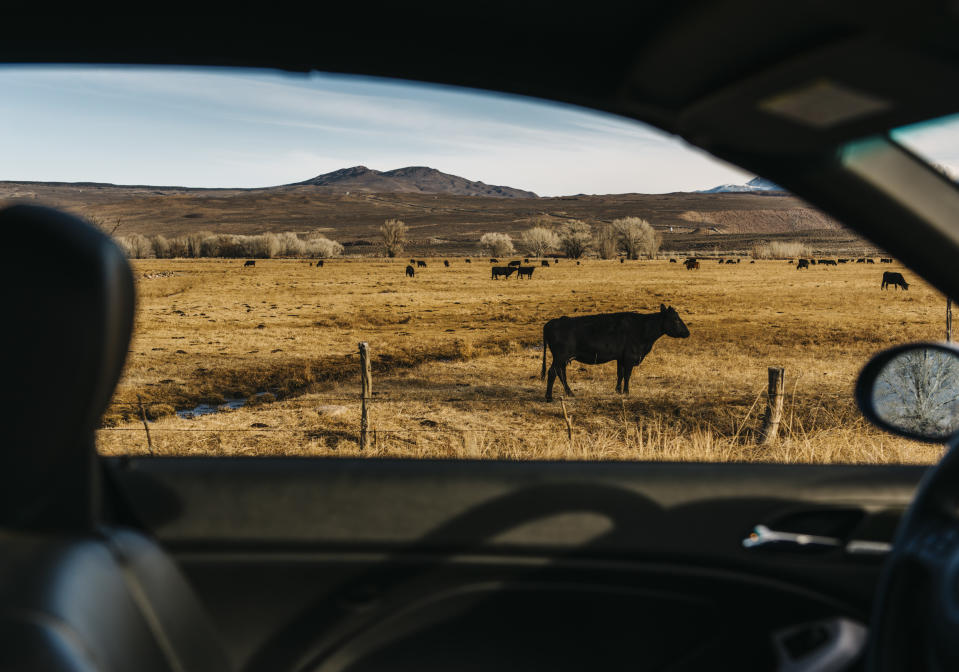
After fueling up in Susanville, we continued on to Adin, golden hills giving way to snow-lined forests.
"I don't think I've seen a single car on this road since we left Susanville," I observed from the passenger seat.
"We literally just passed another car going the other direction," Daniel said.
I needed sleep.
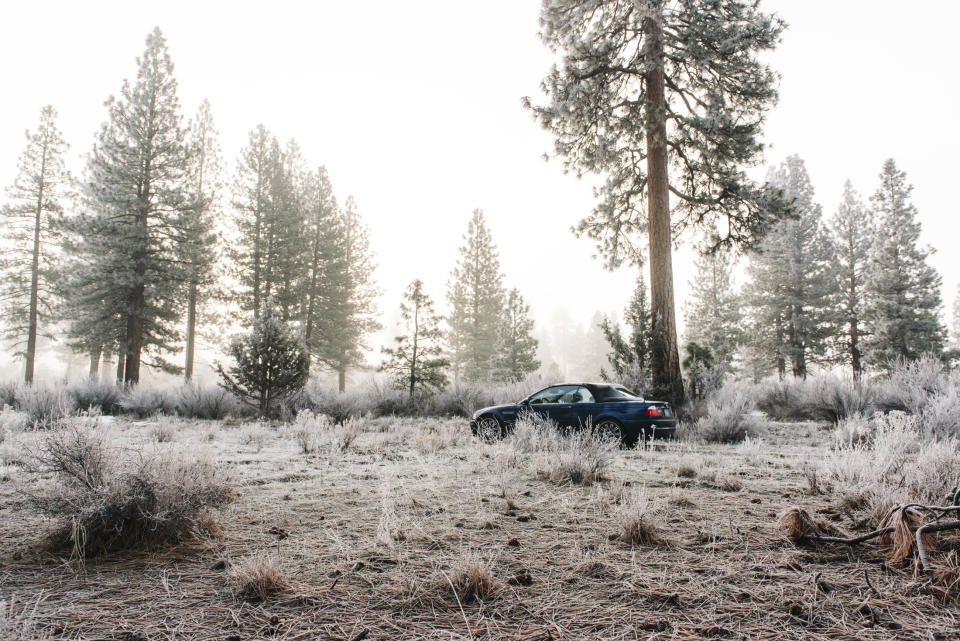
DAY 4: Crater Lake
You know when you scrape ice off a windshield and the few shavings that you break loose but don't completely clear then re-freeze back onto the glass once you start driving? Well, I didn't, because this is something I never have to deal with in Texas. But with the temperature around 28 degrees when we left Adin the next morning, it was something I quickly learned.
We stopped at plenty of lakes on our trip, but without a doubt, the most impressive was Oregon's Crater Lake, a collapsed volcano that filled with water 6000 years ago. At nearly 2000 feet, it's the deepest lake in the United States. It's also a National Park and considered one of Oregon's Seven Wonders. As unofficial ambassador to Oregon, Daniel was eager to share this local treasure with me.
According to the weather webcams (they really are a lifesaver), the road up to Crater Lake was open and freshly plowed after having been closed for most of the week before. On top of that, the forecast was listed as partly sunny. Good signs.

Despite the road being recently plowed, it still felt like we were amongst the first to drive up the mountain-and certainly the first to drive it that day with the top down in a rear-wheel-drive convertible on snow tires. "I got these tires specifically to do this drive," Daniel said with a huge grin. Fifteen-foot snow banks towered on either side of the road, which curved and twisted and climbed to over 6000 feet.
Daniel deliberately pushed the car to slide in some of the slow, wet corners, but the grip from the snow tires remained impressive. "It's great when it's just snow and slush," he said, managing a jittery steering wheel, "but it has trouble when one tire is on pavement and the other is on snow."
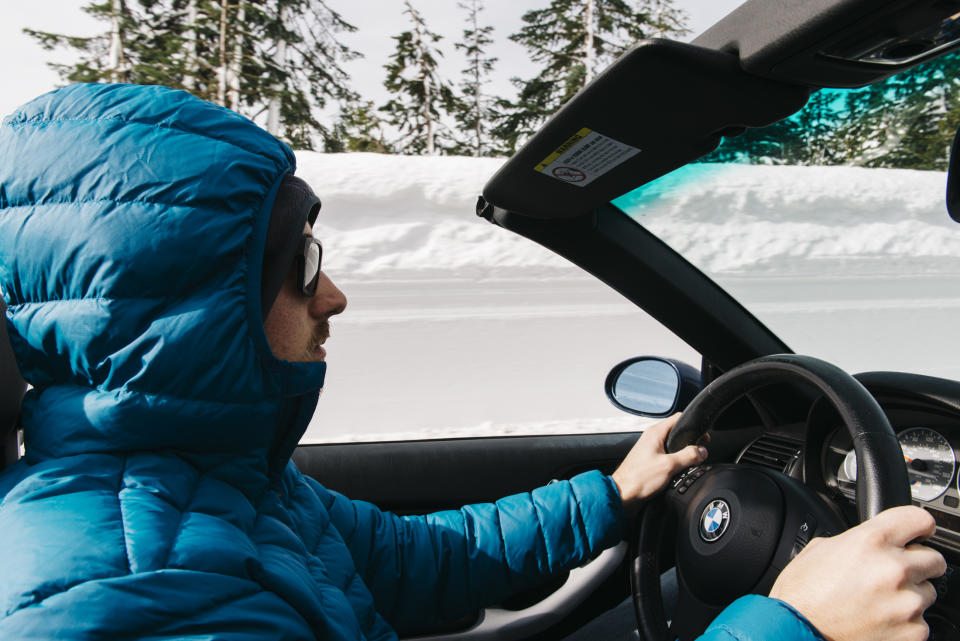
As we approached the top, the sun was out and the sky was clear. When we could go no further in the car, we got out and climbed the path up the snowbanks, eventually standing eye level with the tops of 20-foot pine trees buried in the snow. Each step crunched the unpacked snow downward by nearly a foot.
"I need some of those, uh, tennis-racket shoes," I said, proudly ignorant to whatever the hell those things are called. (Snowshoes, as it turns out-not the most technical term.)
We made our way toward the edge and took in the view. It's usually cloudy, preventing you from seeing the other side of the shore five miles away. But on this day, it was crystal clear. The only sounds were from birds and the dripping of snow-covered trees melting under the overhead sun. It smelled like a brand-new stick of deodorant with a name like "Fresh Spring." Forty-five minutes went by. We didn't even notice.
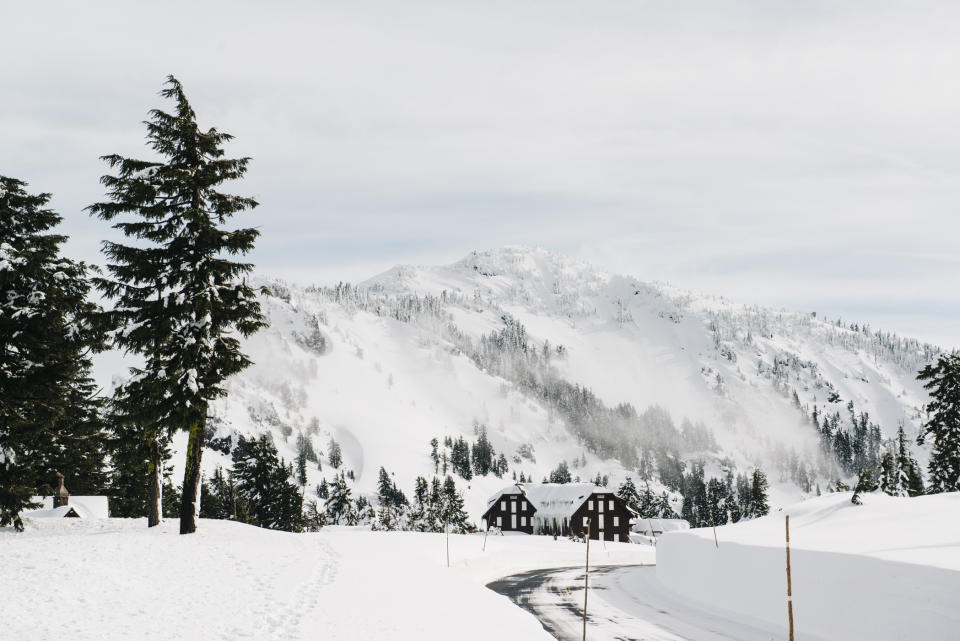
DAY 5: The Land of Plenty
We were well into Oregon by now, so we could relax a little. The breakneck pace of the first four days had tapered off, so spent more time enjoying the scenery. We left our motel in Madras just in time to catch a foggy sunrise, passed through some ghost towns-high on my "things to see" list-and stopped for a meal in Grass Valley.
From there, we took one of the most incredible roads I've ever seen. Imagine picturesque, Alpine switchbacks, but with the countryside sheared apart by volcanic activity and puffy white clouds pouring out of the fissures. The road was empty, drenched in sun, and seemingly designed with the M3's 8000-rpm redline in mind.
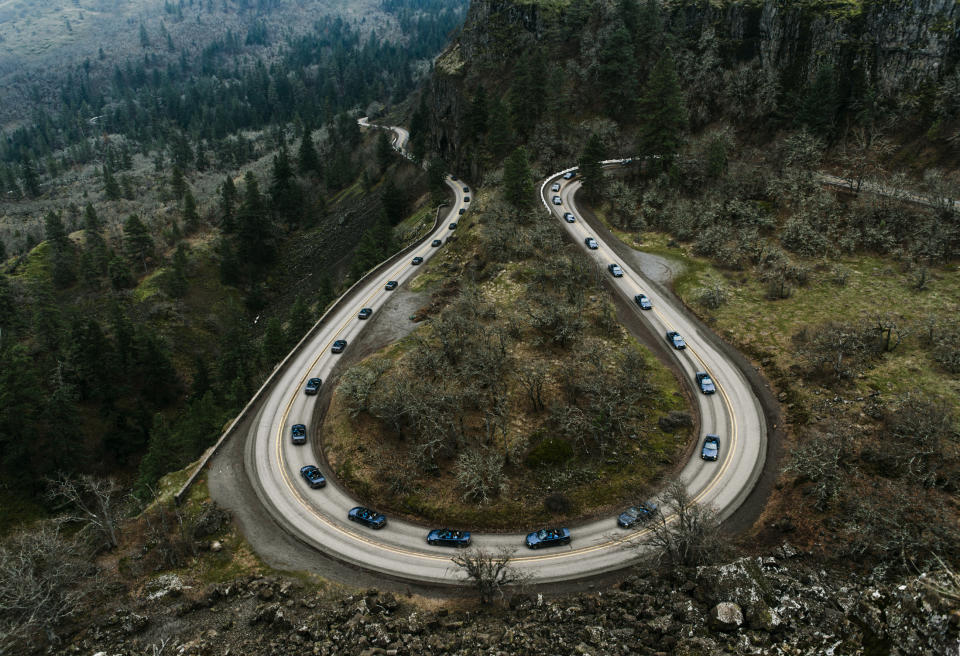
I'd been told that due to Oregon's northern latitude, the sun is never directly overhead during the winter. How would I even notice? I thought. Well, it's really noticeable, and for a photographer, it's fantastic-like Golden Hour all day. The mid-day sun sits where it normally would at 4:30 p.m., hanging low in the sky and casting long and dramatic shadows. It makes an already stunning landscape even more impactful.
We stopped in more empty towns, a brewery, a Porsche shop that's also an ice cream parlor, and the spectacular waterfalls of the Columbus River Gorge. Throughout the day, sunny meadows were followed 15 minutes later by frigid, snow-covered valleys. Low-lying clouds, off in the distance, look like rapidly moving glaciers of moisture until suddenly you're just in them, driving through what feels like a foggy morning. This cycle repeated a few times, and before I knew it, we were in Portland.
But most of all, I was impressed with Oregon.
Over the course of the trip, the M3 performed beautifully and left a huge impression on me. It held tons of stuff, was quiet at 85 mph despite the soft top, and never gave us an issue over 2800 miles. The engine makes more than 100 hp per liter and is 12 years old, but it never broke a sweat over a relentless five days. In corners, the car's roadholding was awe-inspiring-specifically how balanced, neutral, and predictable it was. "It's too predictable," Daniel said at one point while laughing. "It gives me a little too much confidence sometimes."
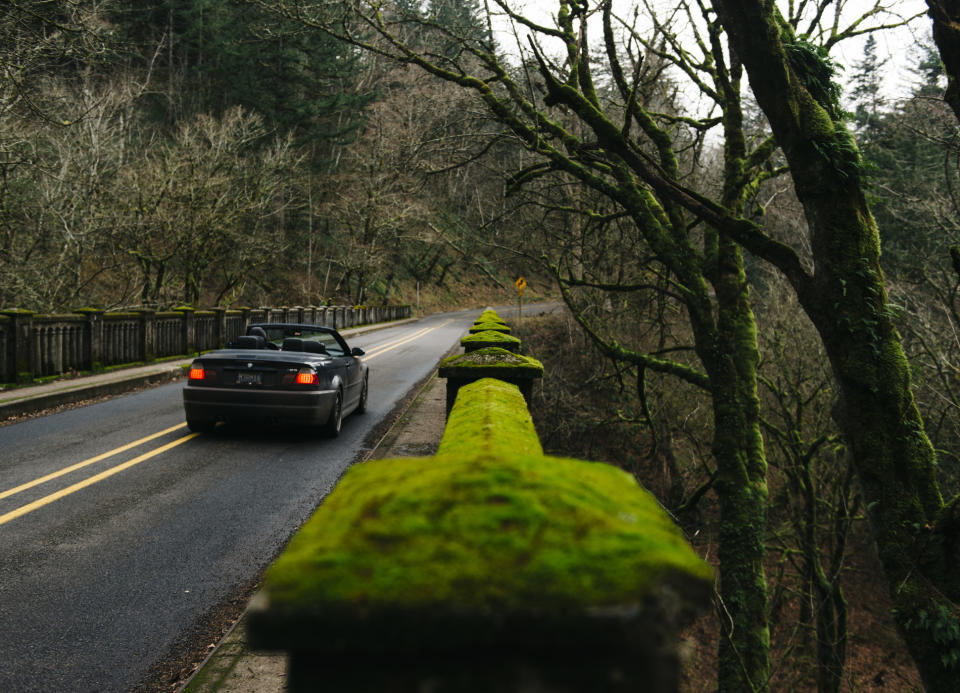
But most of all, I was impressed with Oregon. It's a place almost untouched by urban sprawl, seemingly blessed with whatever type of weather you prefer, and the scenery looks as if someone combined all the best bits of North America's geology into one beautiful place. The people in Portland were some of the friendliest people I've ever met, and the food was so good that I'm still thinking about it months later.
Any concerns I had about our trip being too planned, too methodical, and too fast-paced were simply wrong. It was grueling and tiring, but we never could have seen nearly as much without a plan. The whole trip blurred into a mix of relentless progress and wildly varied terrains: breakfast here, lunch there, this mountain range, that perfect road. We covered a lot of ground, but we made the most of our miles. We experienced something. And now, my biggest concern is just making sure I remember it all.
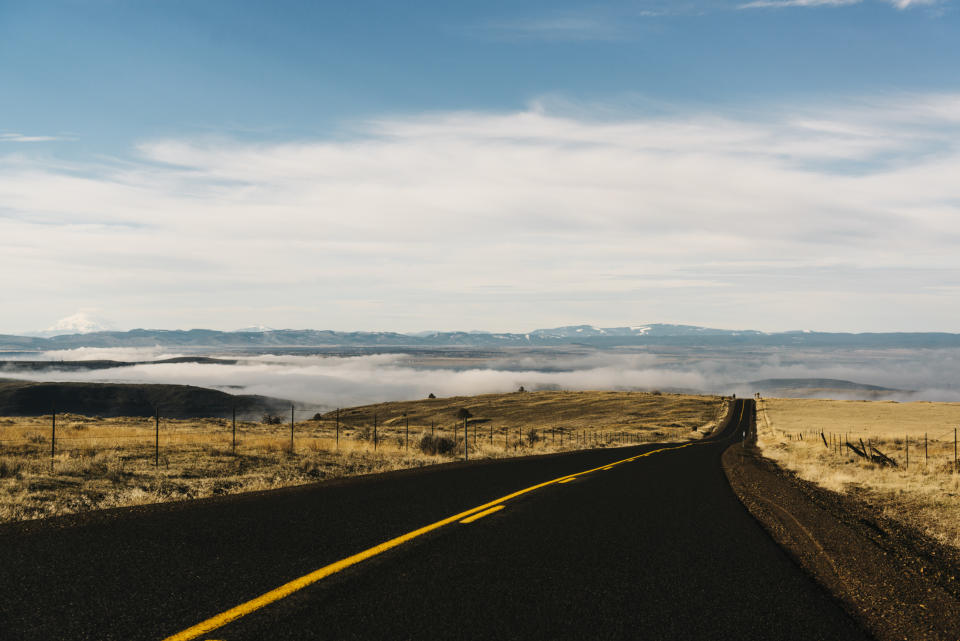

 Yahoo Autos
Yahoo Autos 